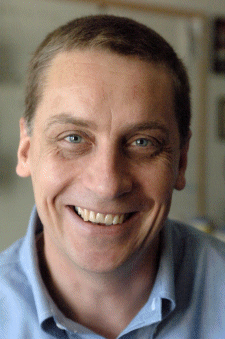ABOUT ACL

The Aerospace Controls Laboratory (ACL)researches topics related to autonomous systems and control design for aircraft, spacecraft, and ground vehicles. Theoretical research is pursued in areas such as: decision making under uncertainty; path planning, activity and task assignment; estimation and navigation; sensor network design; robust control, adaptive control, and model predictive control. A key part of ACL isRAVEN (Real-time indoor AutonomousVehicle test ENvironment), a unique experimental facility that uses a Vicon motion capture sensing to enable rapid prototyping of aerobatic flight controllers for helicopters and aircraft; robust coordination algorithms for multiple helicopters; and vision-based sensing algorithms for indoor flight.
PRIMARY RESEARCH AREAS
- Relative Navigation (CDGPS) and Formation Flying Spacecraft
- Control and Decision Making for UAVs
- Robust, Nonlinear, and Adaptive Control
- Ph.D. and Master Theses
 | JONATHAN P. HOWProfessor Department of Aeronautics and Astronautics Aerospace Controls Laboratory Massachusetts Institute of Technology jhow@mit.edu |
Research Interests: Navigation and Control
| Planning and Control for Team MIT - DARPA Grand (Urban) Challenge Team | ||
| My research group and some papers available to download | ||
| Activity planning and trajectory design for cooperating vehicles (UAVs and robots) | ||
| Vision-based navigation for GPS-denied flight (movie) | ||
| Decentralized activity planning for Cooperating UAV's (AFOSR) | ||
| Multi-UAV testbeds - Indoors using autonomous quadrotors (RAVEN) and external UAVs | ||
| Mixed-integer Linear Programming for Multi-Vehicle Control (MILP) | ||
| Autonomous aircraft agile flight and aerobatics | ||
| Spacecraft navigation, control, and autonomy | ||
| Orion Formation Flying Microsatellite Experiment (NASA GSFC) | ||
| Relative Navigation for Formation Flying Spacecraft using GPS (NASA GSFC) | ||
| Autonomous Formation Flying Spacecraft (CETDP) see New scientist and GPSworld | ||
| Magnetic Indoor Absolute Positioning System | ||
| Robust and hybrid control, control of flexible structures using GPS (article) | ||
Recent Classes
| Principles of Optimal Control (OCW) | |
| Aircraft Stability & Control (OCW) | |
| Feedback Control Systems (OCW) | |
| Aerospace Dynamics (OCW) |
























No comments:
Post a Comment